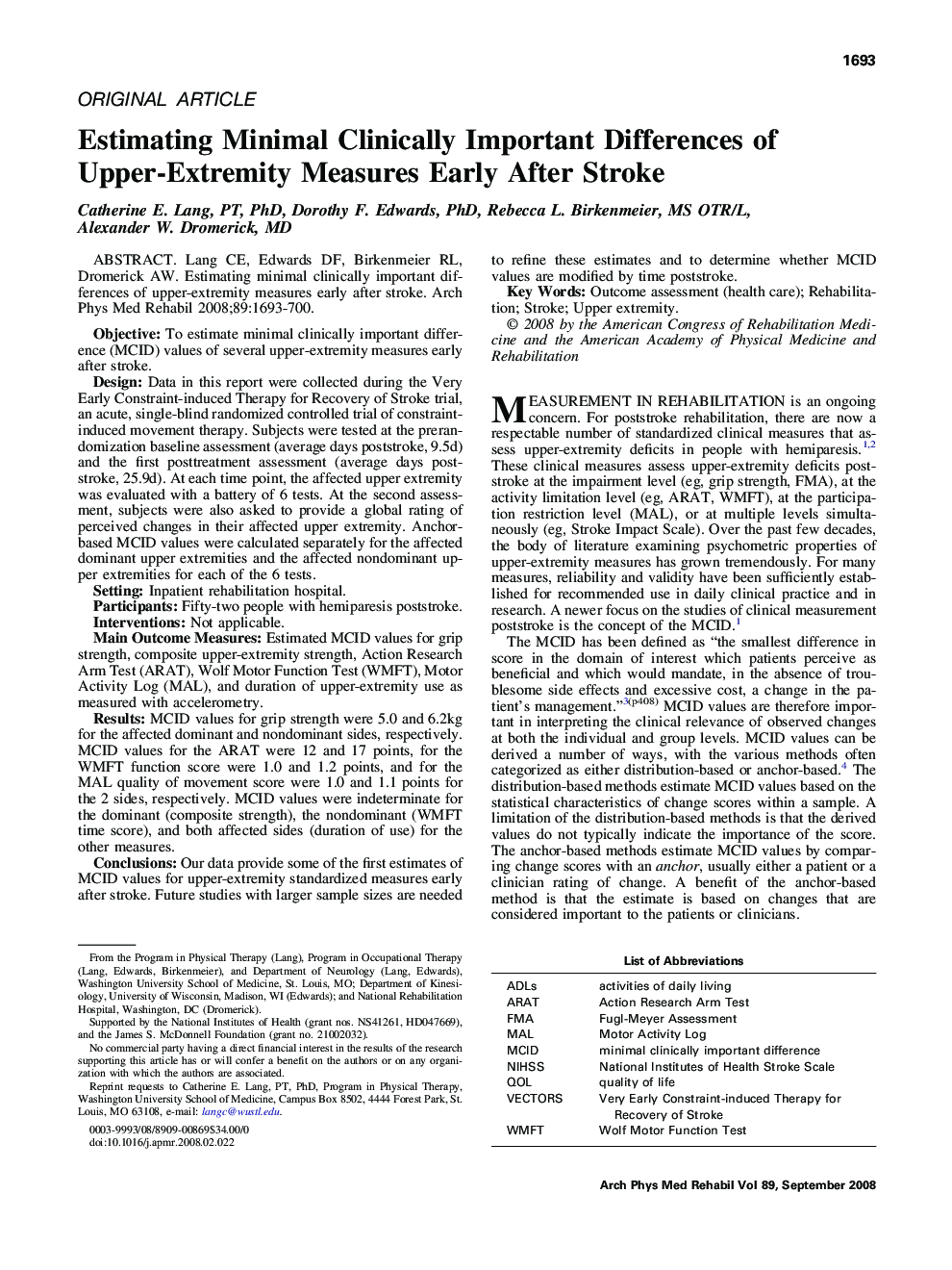| کد مقاله | کد نشریه | سال انتشار | مقاله انگلیسی | نسخه تمام متن |
|---|---|---|---|---|
| 3450443 | 1595775 | 2008 | 8 صفحه PDF | دانلود رایگان |

Lang CE, Edwards DF, Birkenmeier RL, Dromerick AW. Estimating minimal clinically important differences of upper-extremity measures early after stroke.ObjectiveTo estimate minimal clinically important difference (MCID) values of several upper-extremity measures early after stroke.DesignData in this report were collected during the Very Early Constraint-induced Therapy for Recovery of Stroke trial, an acute, single-blind randomized controlled trial of constraint-induced movement therapy. Subjects were tested at the prerandomization baseline assessment (average days poststroke, 9.5d) and the first posttreatment assessment (average days poststroke, 25.9d). At each time point, the affected upper extremity was evaluated with a battery of 6 tests. At the second assessment, subjects were also asked to provide a global rating of perceived changes in their affected upper extremity. Anchor-based MCID values were calculated separately for the affected dominant upper extremities and the affected nondominant upper extremities for each of the 6 tests.SettingInpatient rehabilitation hospital.ParticipantsFifty-two people with hemiparesis poststroke.InterventionsNot applicable.Main Outcome MeasuresEstimated MCID values for grip strength, composite upper-extremity strength, Action Research Arm Test (ARAT), Wolf Motor Function Test (WMFT), Motor Activity Log (MAL), and duration of upper-extremity use as measured with accelerometry.ResultsMCID values for grip strength were 5.0 and 6.2kg for the affected dominant and nondominant sides, respectively. MCID values for the ARAT were 12 and 17 points, for the WMFT function score were 1.0 and 1.2 points, and for the MAL quality of movement score were 1.0 and 1.1 points for the 2 sides, respectively. MCID values were indeterminate for the dominant (composite strength), the nondominant (WMFT time score), and both affected sides (duration of use) for the other measures.ConclusionsOur data provide some of the first estimates of MCID values for upper-extremity standardized measures early after stroke. Future studies with larger sample sizes are needed to refine these estimates and to determine whether MCID values are modified by time poststroke.
Journal: Archives of Physical Medicine and Rehabilitation - Volume 89, Issue 9, September 2008, Pages 1693–1700